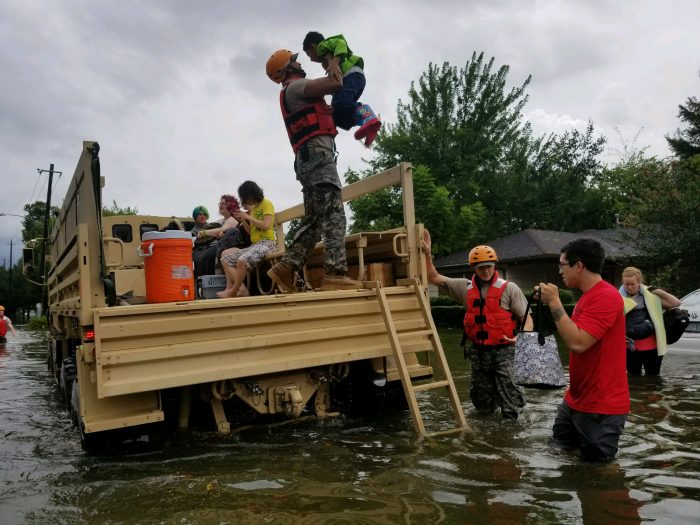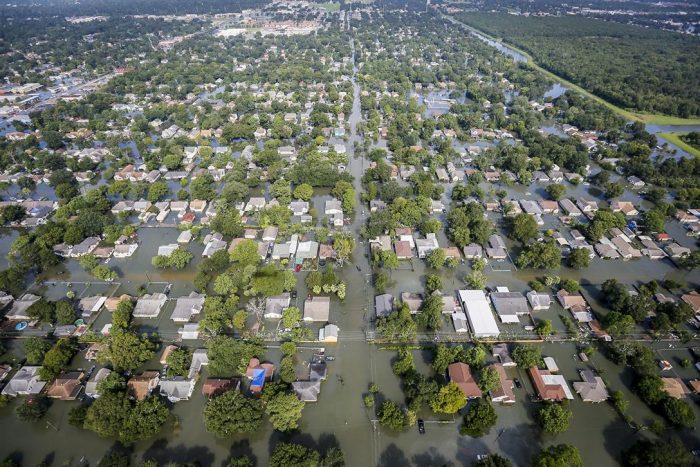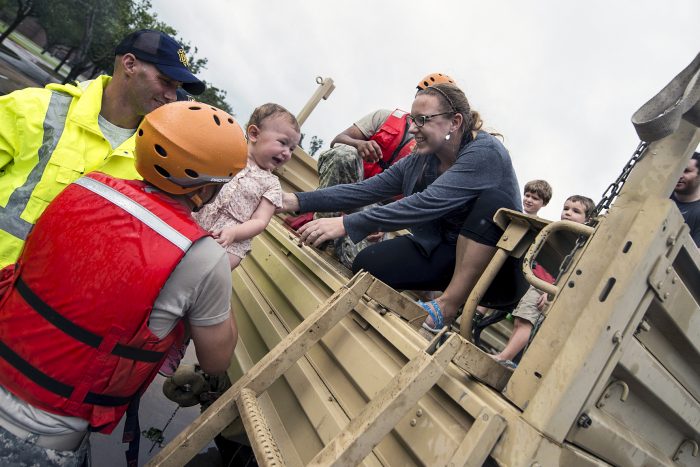The Height of My Daughter
I measured my 8-year-old this morning – you know, against the door jamb with sharpie in hand to mark how tall she is now. “Push your heels all the way to the wall and lift your chin up,” I encouraged her. With the ruler in the left hand and the pen in the right hand […]

I measured my 8-year-old this morning – you know, against the door jamb with sharpie in hand to mark how tall she is now. “Push your heels all the way to the wall and lift your chin up,” I encouraged her. With the ruler in the left hand and the pen in the right hand I made my mark and added today’s date.
She is 53 inches tall.
After making my mark, I looked at my daughter in awe. Partly because I think she is just pretty terrific, but also astounded for a totally different reason.
Hurricane Harvey, over this past week, has reportedly dropped 50 inches of rain over parts of Houston and surrounding areas. Almost the height of my daughter.

Lives have been lost, pets have perished, tens of thousands are in living outside of their homes in shelters, hotels, with friends or family. Flooding has left thousands cut off from water and without power. Schools are closed, business are closed, roads are closed.
Over the past week, we at the Center for Disaster Philanthropy have been asked what we are all about, and why we exist. Our vision is that of a world where donors strategically plan for and respond to disasters in order to minimize their impact on vulnerable populations and communities. We carefully watch and track the needs that have arisen out of Hurricane Harvey today, and are also looking toward the future.
Our focus is two-fold: first, we focus on educating donors on how to be most effective in the disaster giving; second, we focus on medium- and long-term recovery – working to ensure that private dollars go to unmet needs well after the spotlight on Harvey dims.
Our CDP Hurricane Harvey Recovery Fund has received a tremendous amount of attention this past week, for which we are incredibly grateful. That fund has five specific priorities:
- Support vulnerable populations whose lives and livelihoods have been devastated;
- Emphasize funding that is medium- and long-term in nature and based upon prevailing needs that emerge in the weeks and months to come;
- Fill in gaps where public resources are unavailable or scarce;
- Foster collaborative relationships among donors – including the sharing of information with funders and nonprofit organizations; and,
- Promote cross-sector coordination with academics, donors, think tanks, and public/private humanitarian actors.
I believe that my daughter still has a few inches taller to grow – and alongside that growth will bring maturity, smarts and experience. In contrast, I hope that the experience Houston and Texas already have in responding to hurricanes and disasters will serve them well as the inches of water slowly shrink away. The Center for Disaster Philanthropy will be here over the coming years to shine a light on Harvey recovery.
More like this

Inaugural Hurricane Harvey Grants Fund Community-Based, Long-Term Recovery

